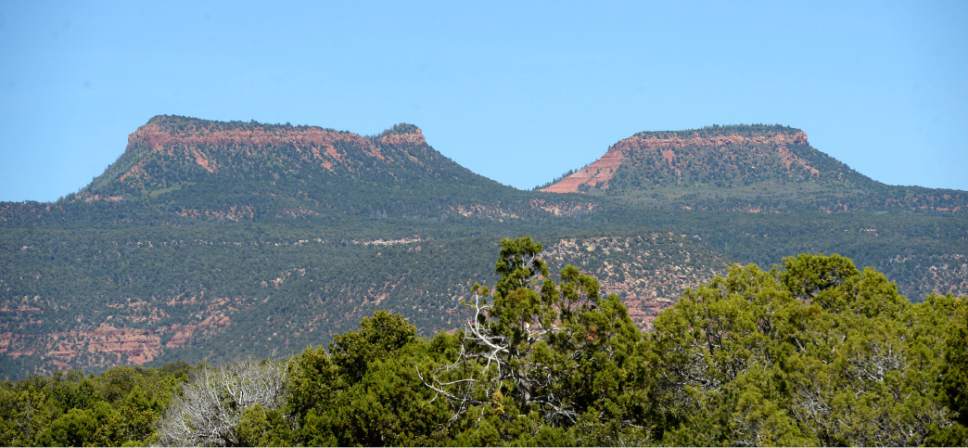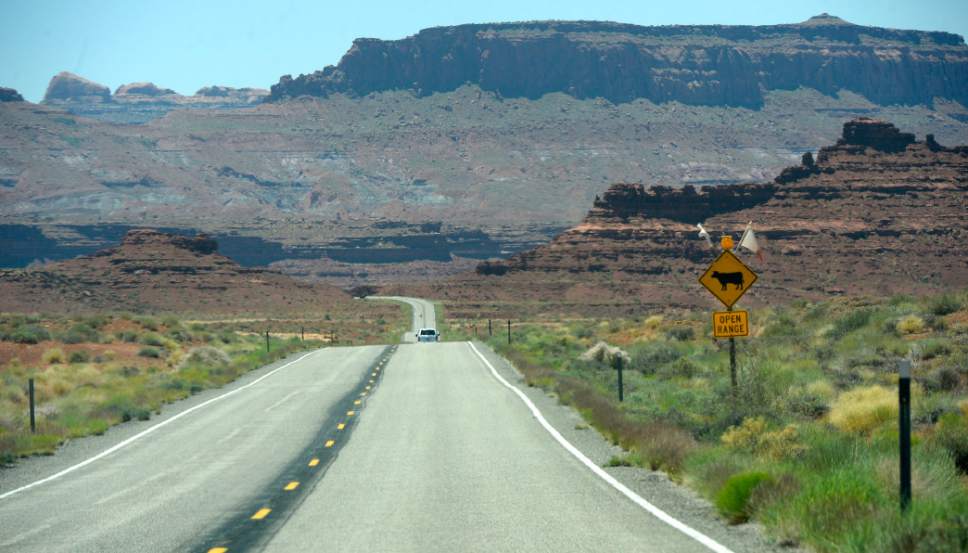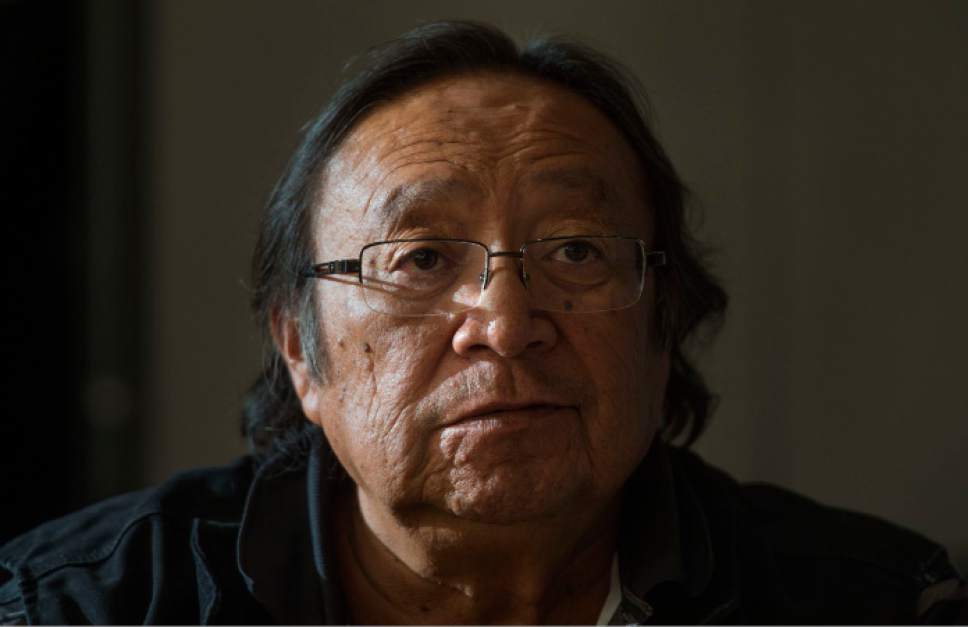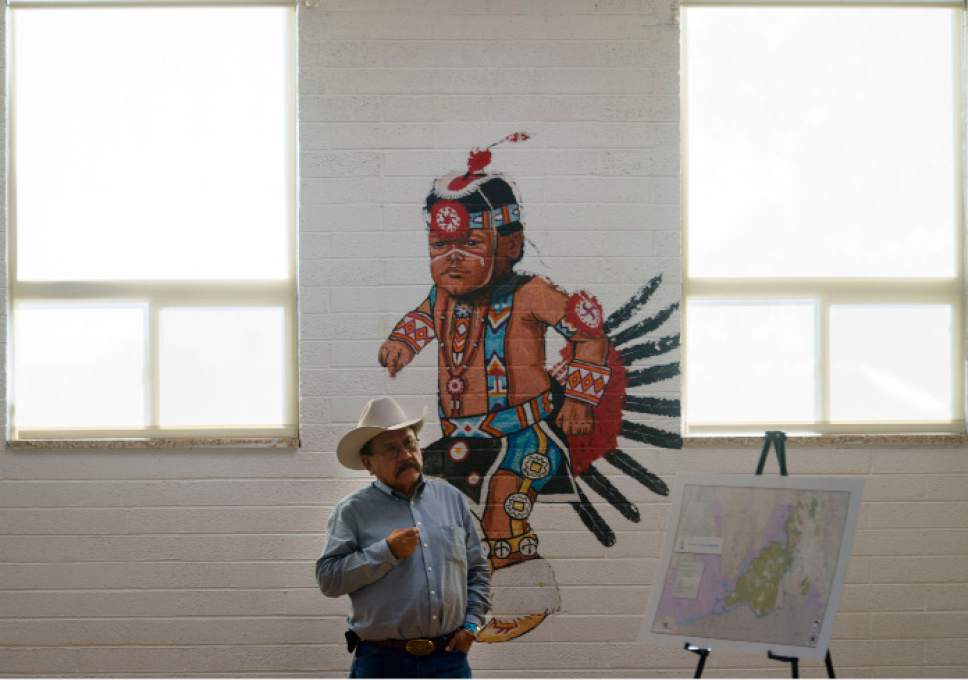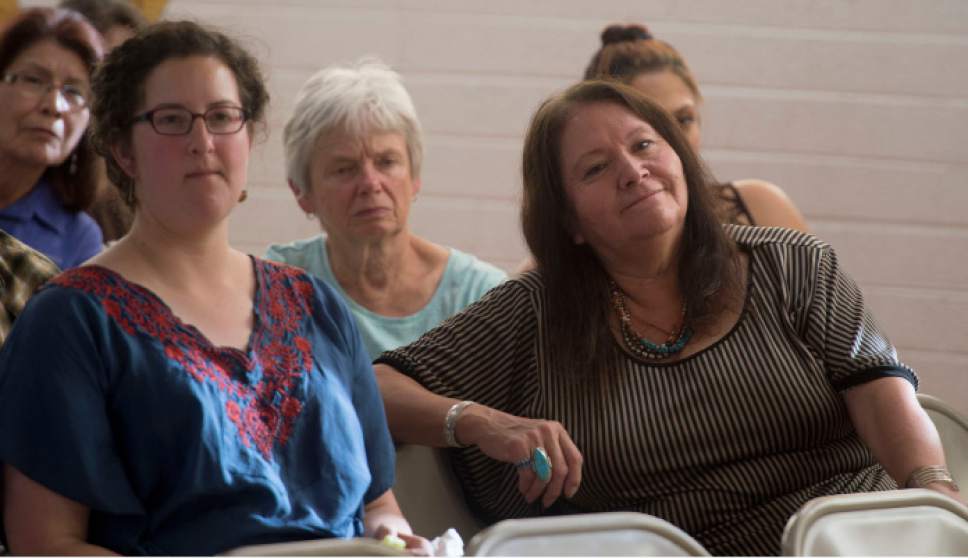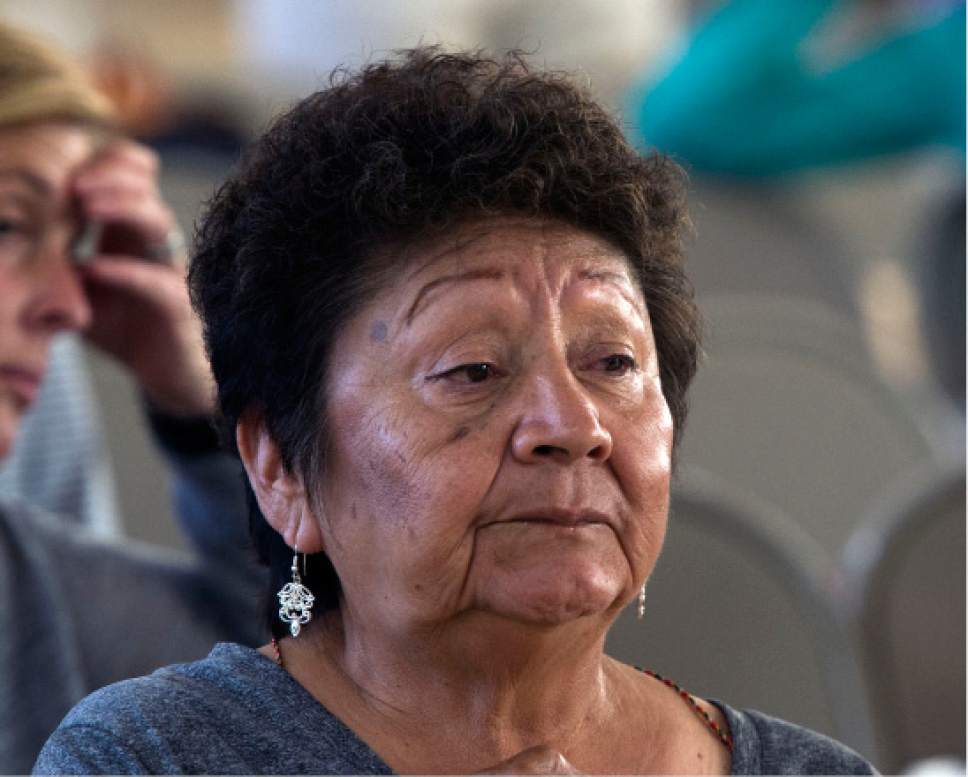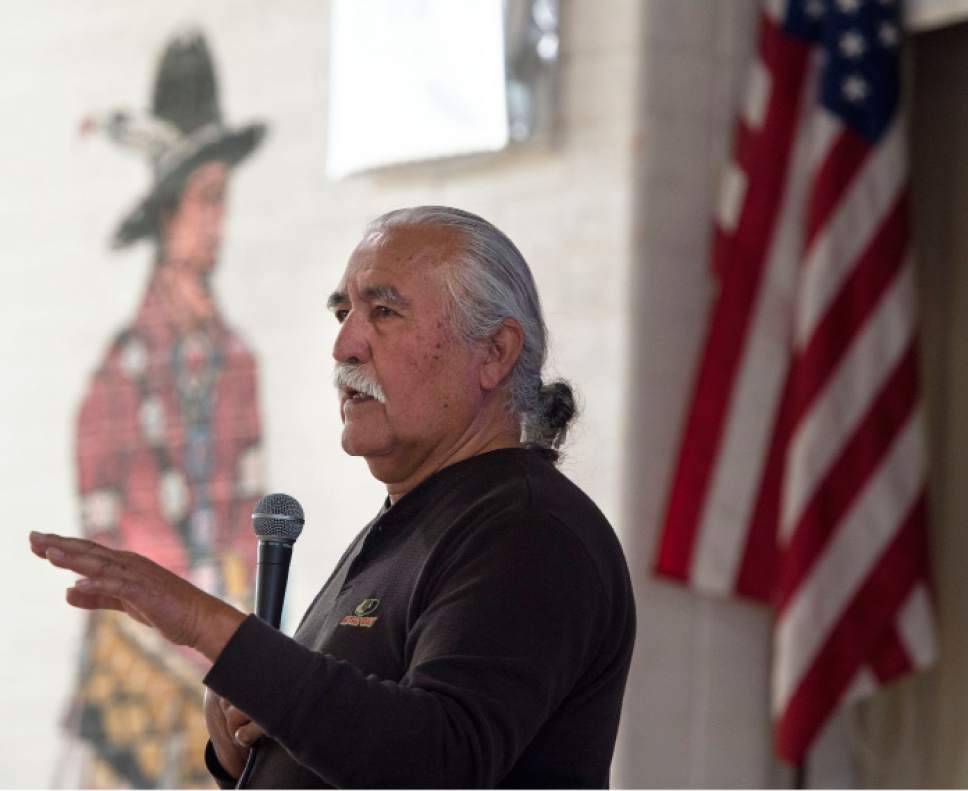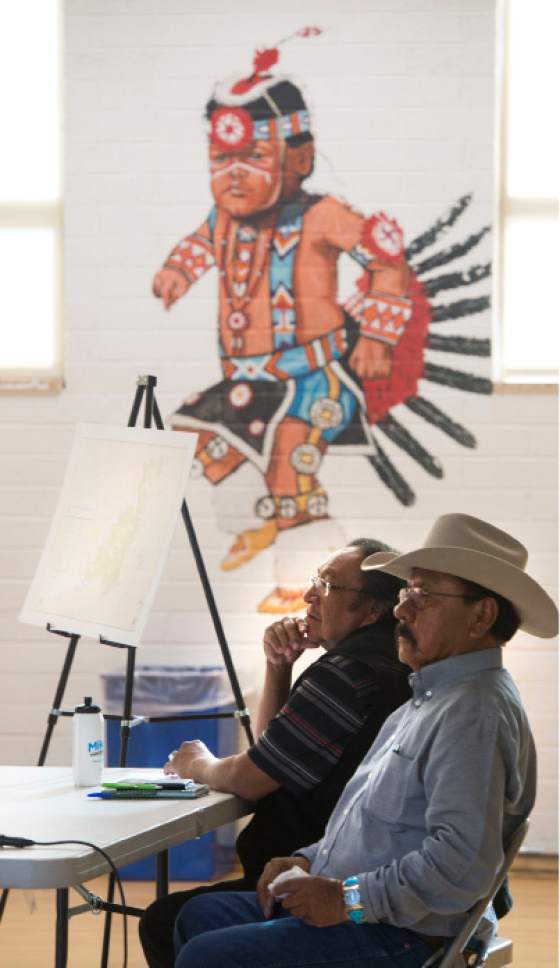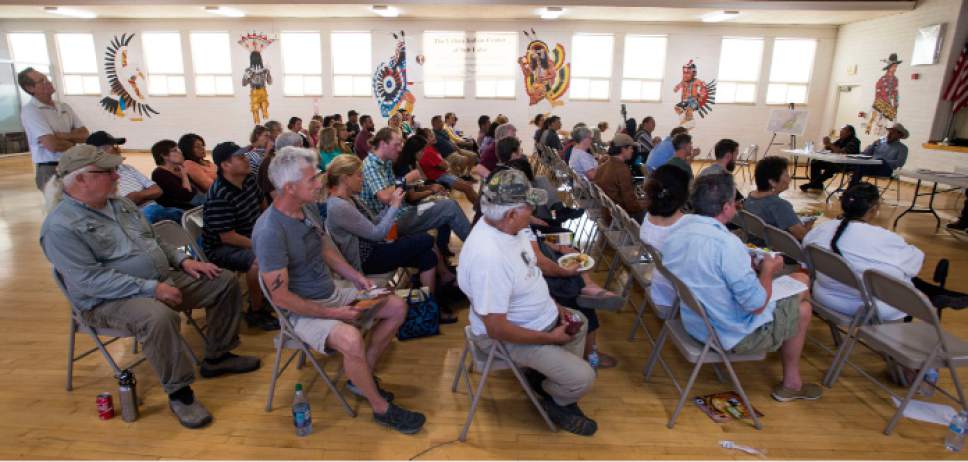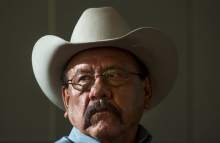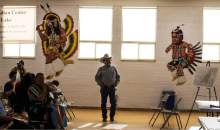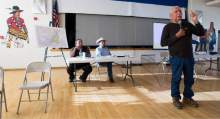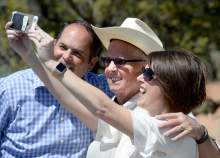This is an archived article that was published on sltrib.com in 2016, and information in the article may be outdated. It is provided only for personal research purposes and may not be reprinted.
Natural Bridges National Monument • In the past week, artifacts have been looted from at least five sacred sites near the Bears Ears buttes, a disturbing trend that an advocate for the creation of a national monument in the area says only the protected designation can halt.
"It's protection and preservation that is desperately needed," said Regina Lopez-Whiteskunk, councilwoman of Ute Mountain Ute Tribe, who said she was informed of the looting by preservation officials. "There is so much that needs to be protected from our history."
But Gov. Gary Herbert and Sen. Orrin Hatch, who traveled to the area Thursday and met with opponents of the national monument, said the answer to preserving the land is not for President Barack Obama to use the Antiquities Act to designate a national monument, but to let the Public Lands Initiative sponsored by Reps. Jason Chaffetz and Rob Bishop run its course.
"It seems everyone has a common goal: They want some kind of protection. The question is the vehicle," Herbert said. "If we really care about the land, if we really care about protecting the land, if we really care about the Native Americans and their reverence for the land, the Public Lands Initiative is the way to do it."
The senator and governor, who were flanked by opponents of the monument, were met by about 25 supporters who urged them to change their minds.
"I'm not going to be on your side on this one," Hatch told a monument supporter, "but we'll work together."
A coalition of American Indian tribes in the area surrounding Bears Ears, as well as several environmental groups, are urging Obama to create a 1.9 million acre national monument on the site just adjacent to the existing Natural Bridges National Monument.
But Rebecca Benally, a San Juan County commissioner and member of the Navajo Nation, slammed supporters of the monument as liars, outsiders and pawns who have been tricked into being tools for "another federal government overreach."
She said proponents of the monuments are telling Navajo elders they could live on the land — "that's how support is being achieved, by nothing but lies" — and went so far as to suggest that monument proponents might be looting gravesites and artifacts, because they were the only ones who had applied for permits for the area.
"I don't know what they think needs to be protected, maybe from themselves," she said.
Benally said most Navajos want to see the land protected, but as a National Conservation Area that could be created under the Public Lands Initiative that would provide a lower level of protection to an area of about 1.2 million acres.
Herbert argued the Public Lands Initiative would not only protect the Bears Ears, but would resolve nagging land management issues on 18 million acres of Utah land.
Hatch said the White House and Interior Department have expressed a willingness to let the Public Lands Initiative run its course, but he acknowledged that there isn't much time to get the bill through Congress.
Chaffetz's chief of staff, Fred Ferguson, said staff members are revising the lands bill based on feedback from stakeholders to an earlier version and working closely with White House and Interior staff. A new, refined version of the proposal may be out in the near future, possibly just a few weeks.
But Ferguson says if the Public Lands Initiative doesn't pass by the end of the year, it's likely that Obama will use his power under the Antiquities Act to create the monument before leaving office.
Benally said the monument designation would force American Indians off the land and keep them from using the area for gathering wood and herbs and conducting religious ceremonies.
The permitted land uses would actually be decided in a detailed monument management plan, said Hopi Vice Chairman Alfred Lomahquahu, a proponent of the monument. The coalition supporting the monument has asked the Obama administration to create a structure in which the monument would be "comanaged" by the federal government and the tribes.
Ferguson said it appears to not be legal for the government to delegate any management responsibilities, but the Public Lands Initiative creates a collaborative management structure for any new conservation area.
Benally said, even if the federal government commits to working with the native leaders, American Indians have a deep distrust of the government because of the history of broken promises and treaties.
"There is broken treaties and broken promises," she said. "We do not trust the federal government."
Herbert said it's vital that Interior Secretary Sally Jewell and other federal land managers come to southern Utah and meet with members of the tribes before making any decisions on the monument. He and Hatch have invited Jewell and Obama to the state, and Hatch said Jewell has told him she would like to come, although no date has been set.
"They've got to come out here and see it on the ground," the governor said. "To make a decision in Washington, D.C., because some people journeyed from here to there and call that local input? Give me a break."
Twitter: @RobertGehrke


